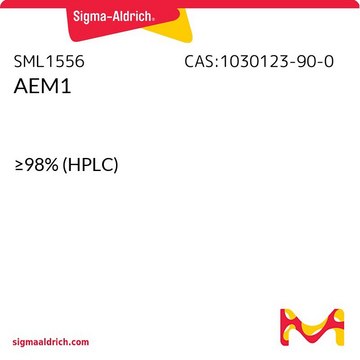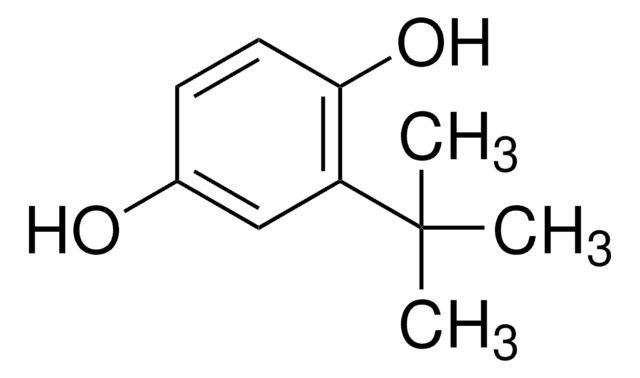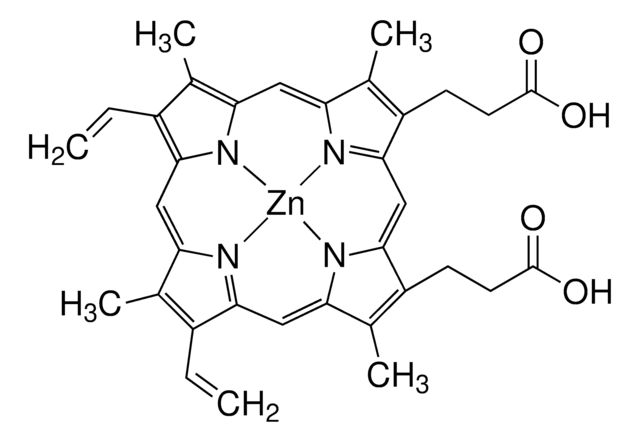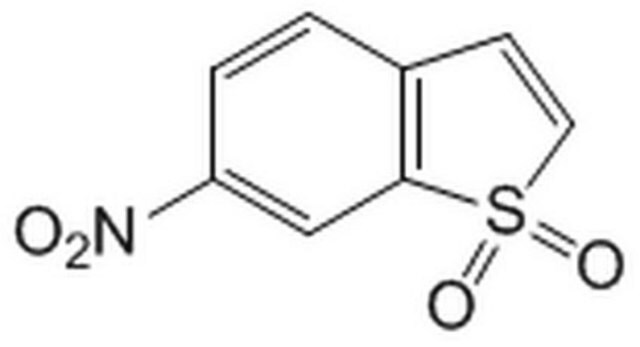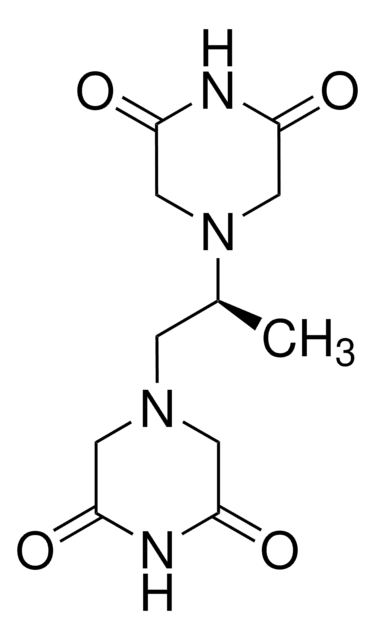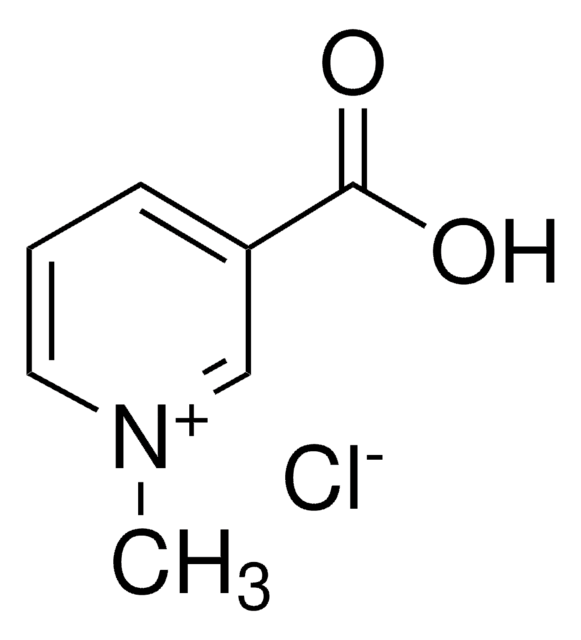Kluczowe dokumenty
SML1833
ML385
≥98% (HPLC), powder, Nrf2 transcription factor inhibitor
Synonim(y):
N-[4-[2,3-Dihydro-1-(2-methylbenzoyl)-1H-indol-5-yl]-5-methyl-2-thiazolyl]-1,3-benzodioxole-5-acetamide
About This Item
Polecane produkty
Nazwa produktu
ML385, ≥98% (HPLC)
Poziom jakości
Próba
≥98% (HPLC)
Formularz
powder
kolor
white to beige
rozpuszczalność
DMSO: 10 mg/mL, clear
temp. przechowywania
2-8°C
ciąg SMILES
O=C(NC1=NC(C2=CC=C(N(C(C3=C(C)C=CC=C3)=O)CC4)C4=C2)=C(C)S1)CC5=CC(OCO6)=C6C=C5
Działania biochem./fizjol.
Kod klasy składowania
11 - Combustible Solids
Klasa zagrożenia wodnego (WGK)
WGK 3
Temperatura zapłonu (°F)
Not applicable
Temperatura zapłonu (°C)
Not applicable
Wybierz jedną z najnowszych wersji:
Certyfikaty analizy (CoA)
Nie widzisz odpowiedniej wersji?
Jeśli potrzebujesz konkretnej wersji, możesz wyszukać konkretny certyfikat według numeru partii lub serii.
Masz już ten produkt?
Dokumenty związane z niedawno zakupionymi produktami zostały zamieszczone w Bibliotece dokumentów.
Klienci oglądali również te produkty
Nasz zespół naukowców ma doświadczenie we wszystkich obszarach badań, w tym w naukach przyrodniczych, materiałoznawstwie, syntezie chemicznej, chromatografii, analityce i wielu innych dziedzinach.
Skontaktuj się z zespołem ds. pomocy technicznej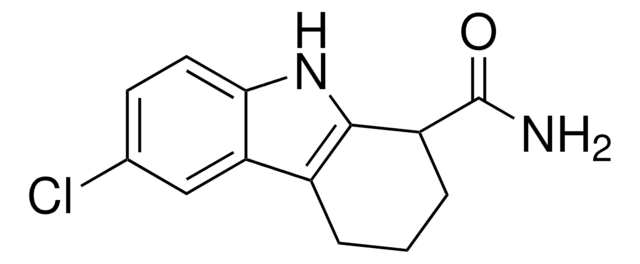
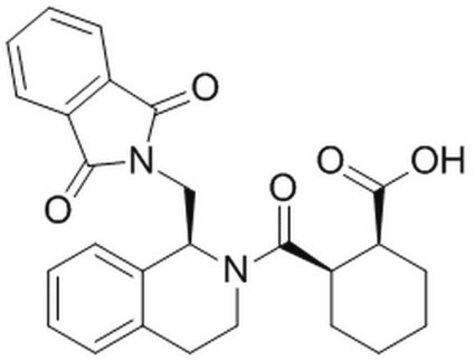
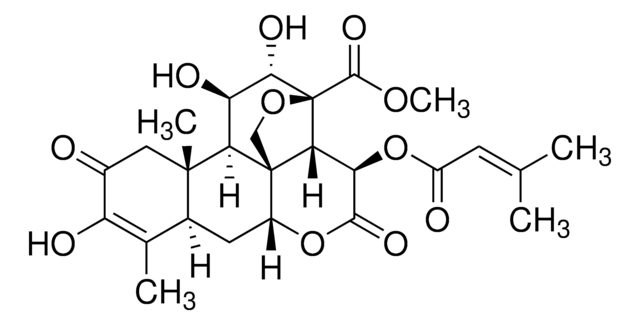

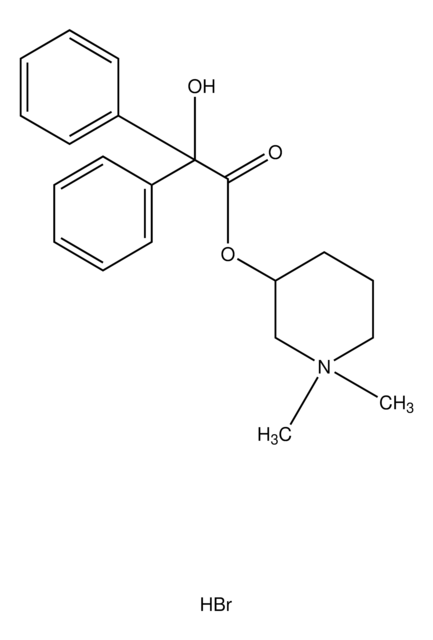
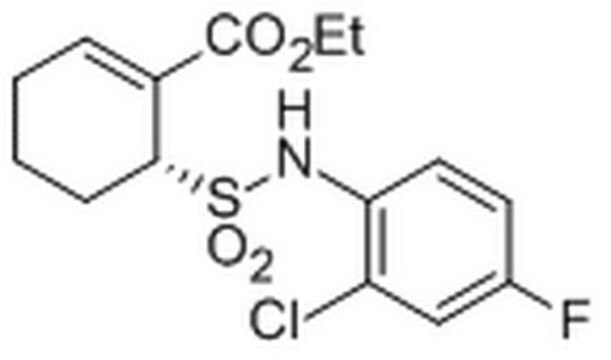
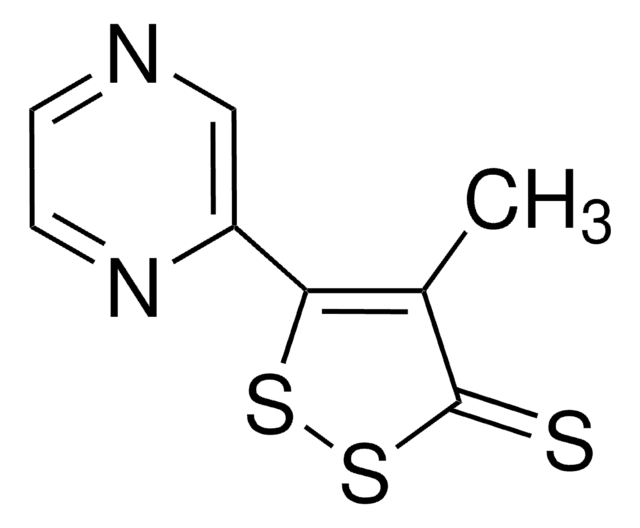

![[D-Trp7, Ala8, D-Phe10]-α-Melanocyte Stimulating Hormone Amide Fragment 6-11 ≥97% (HPLC)](/deepweb/assets/sigmaaldrich/product/structures/137/006/013a88e0-770d-44fb-8438-97b5d2d79d5c/640/013a88e0-770d-44fb-8438-97b5d2d79d5c.png)
